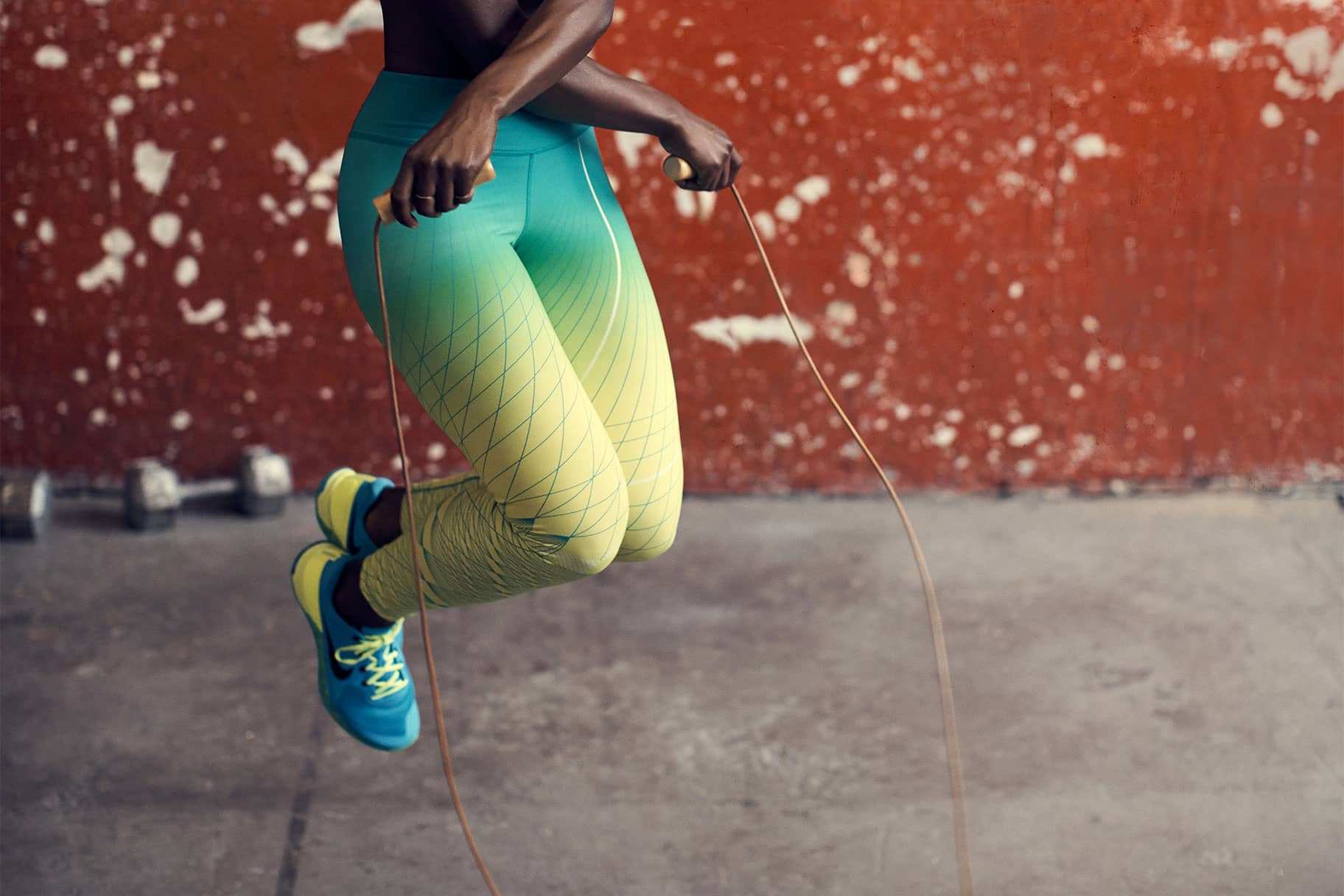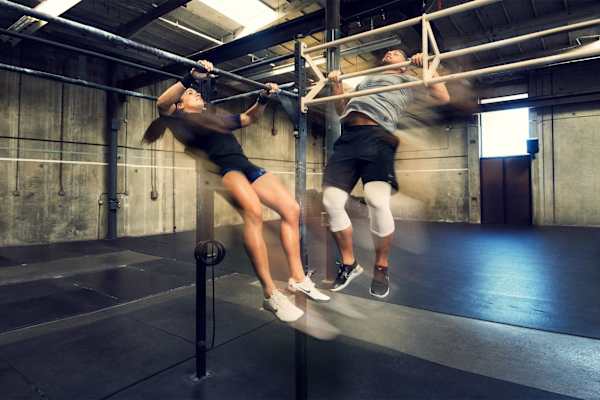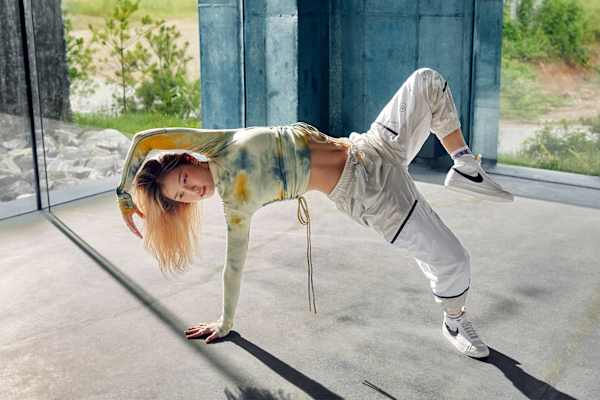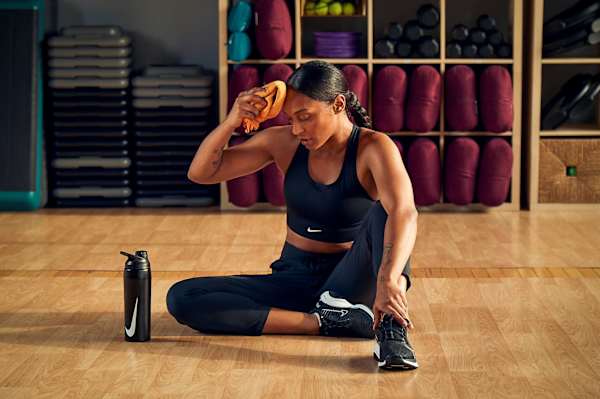What Is a HIIT Workout, Anyway?
Sport & Activity
These high-intensity workouts have been lauded for their efficacy—without requiring heaps of time.

If you're looking for a quick and effective workout, high intensity interval training, or HIIT, is a great option. Unlike continuous or steady state exercises (Think: logging quality time on an elliptical), these workouts are designed to be short and vigorous, punctuated by activity and recovery.
"HIIT is a style of training that alternates between periods of work and periods of rest", NASM-certified personal trainer Gina Harney said. "The work periods are going to be quick, dynamic movements, designed to elevate your heart rate as quickly as possible. The rest breaks allow your heart rate to recover slightly before heading to the next work round", she said.
Since HIIT workouts are intense, they typically only last for about 20 to 25 minutes.
What are the benefits of a HIIT workout?
Beyond being an effective workout when you're short on time, HIIT offers a host of other perks. More on that below.
1.HIIT boosts your calorie burn
Not only has some research shown that HIIT can burn more calories compared to other modes of exercise during the same time frame, but it may also help you long after the workout, too. One word: afterburn. Exercise increases your metabolic rate long after the last rep, burning additional calories throughout the day. HIIT is one type of exercise that can create this afterburn, research has shown.
"Because you're working at such a high capacity, you dip into an energy deficit, and your body spends hours after trying to get back to normal levels", said Kelly Cosentino, an NCSF-certified personal trainer.
2.HIIT improves aerobic fitness
Both moderate-intensity exercise and HIIT can lead to weight and fat loss as well as lower blood pressure and cholesterol. According to a 2021 study in BMJ Open Sport & Exercise Medicine, HIIT boosted cardiorespiratory fitness better than steady-state exercise over a 12-week period. Research also suggests that HIIT may lead to a healthier resting heart rate and blood vessel function.
3.HIIT may help ease symptoms of certain health conditions:
There's evidence that HIIT can help relieve lower back pain and decrease the risk of heart disease risk in people with coronary artery disease. Research also indicates that regular HIIT workouts can boost fitness levels in people before surgery and also may improve hormone balance in people with polycystic ovary syndrome.
How to do a HIIT workout.
First, set up your interval timing. HIIT involves periods of work followed by periods of rest. There are several ways you can programme a workout:
1.AMRAP
This acronym stands for "as many reps as possible". You'll set your work interval (e.g., 30 seconds of work and then 30 seconds of rest, or 45 seconds of work and then 15 seconds of rest) and do as many reps of one exercise as possible in that time. "Because you're working against the clock and pushing yourself hard, you should be reaching your maximum level", Cosentino said.
2.EMOM
Another acronym, this means "every minute on the minute". With this type of HIIT training, you decide how many reps you'll do and then work to complete those as the minute starts. Whatever time you have left over is your rest period. As the next minute starts again, repeat.
3.Tabata
"Tabata is the most popular form of HIIT", Cosentino said. In it, you will do 20 seconds of work, followed by 10 seconds of rest, repeated eight times. The reason why this style tends to be preferred is that the interval is bite-sized enough that rest (though also short) is always around the corner.
4.Distance
If you're on a cardio machine or running, you can structure the workout by distance. For example, Harney said, you might do a quarter-mile sprint, followed by a quarter-mile recovery.
HIIT can be done as its own workout (in which case you might do it for 20 to 25 minutes) or added as a finisher after a strength workout (where it would be a shorter workout, like a four-minute tabata).
Are you going hard enough?
HIIT is all about high intensity. To ensure you're reaching the optimal effort, try watching your rate of perceived exertion, or RPE, Cosentino said. Grade your effort on a scale of one to 10. (One is relaxing on the couch, while 10 is your maximum effort.) Aim for an exertion of eight to nine, she said. Though, if you're new to HIIT, it may be wise to scale back the intensity a bit your first couple of times.
"HIIT is not a cakewalk. It's about pushing through your comfort zone", Cosentino said.
If you're new to a fitness routine, Harney recommends improving your baseline aerobic fitness first with cardio activities. Start with 10 minutes of aerobic activity such as walking, running, dancing or cycling and build up to 30 minutes, she said. After that, you can try out some brief intervals by increasing the speed every couple of minutes for 30 seconds. At first, you might just do one of these surges but over time, you can work up to adding more.
When just starting HIIT, fit it into your routine one to two times per week, initially sticking to 15 minutes duration, and then building up from there once you feel more confident, NASM-certified personal trainer Julie Jones said. She said she recommends doing HIIT no more than three times per week on non-consecutive days, which allows ample recovery periods between each session. Include a short warm-up and cool-down, too. Still, you'll be in and out in 30 minutes—or less.
What exercises are best for HIIT?
The good news is that you can do a HIIT workout at the gym on a cardio machine, with weights or using body weight. What's most important is that it works for you, you're able to maintain proper form and technique (even when your body gets tired), and you enjoy it.
Choose movements that get your heart rate elevated and that you know you can execute with good form even as you move quickly. Here are some suggestions, depending on what you're using (weights, body weight or cardio machines).
1.Weights
Pick a circuit of compound movements that utilise both upper and lower body, which will increase your heart rate, such as the squat press, clean and snatch, Cosentino said.
2.Body weight
Focus on plyometric exercises, including star jumps, burpees, skaters, jumping squat or a jumping lunge. If you are not comfortable jumping, then try air squats, lunges, curtsey lunges and modified burpees.
3.Cardio machines
Go for whatever you like best, such as the elliptical, rowing, indoor cycling or air bike, or running or sprinting on a treadmill.
Because you will be moving fast and churning out reps quickly, make sure that you feel confident in the exercises you choose for your HIIT workout.
Words by Jessica Migala




